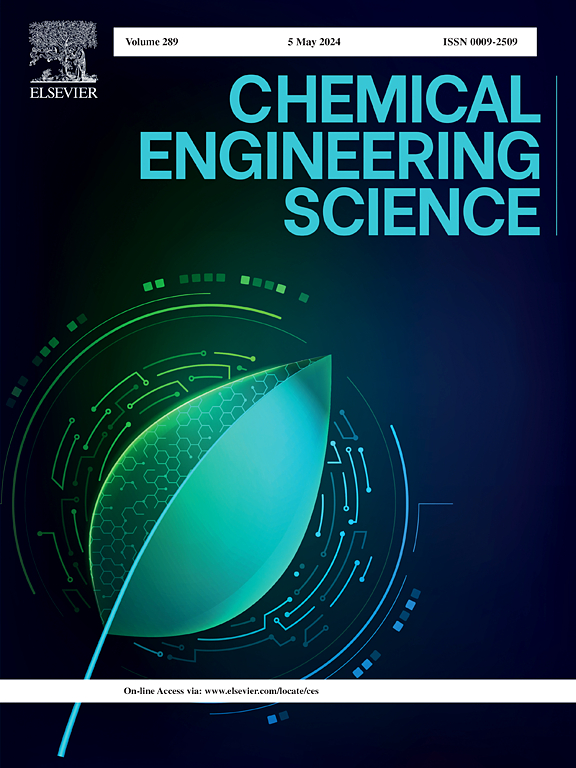Investigation of unsteady flow in liquid-liquid hydrocyclone using Eulerian-Lagrangian approach
IF 4.1
2区 工程技术
Q2 ENGINEERING, CHEMICAL
引用次数: 0
Abstract
The considerable influence of inflow variations within hydrocyclones on separation efficiency and the time required to achieve steady-state flow made the examination of the transient behavior of two-phase flow crucial. This study investigated the overall progression of two-phase flow, starting from the injection of oil droplets until reaching a steady state in a de-oiling hydrocyclone simulated using the open-source software OpenFOAM v5. Furthermore, the impact of sinusoidal variations in the inlet flow was examined, as vibrations on oil platforms significantly affected the inlet flow of hydrocyclones, thereby influencing their efficiency. To assess the improvement in efficiency over time, the analysis focused on the variations in efficiency from the initial introduction of oil droplets into the hydrocyclone until maximum efficiency was achieved. This examination revealed three key time spans (Start-Up, Semi-Stable, and Fully Stable) where the efficiency trend underwent noticeable changes. Notably, the initial time span (Start-Up) was the most critical, showing an 80% increase in efficiency within the first two seconds. Additionally, the study examined the breakup and coalescence of droplets during transient oil injection at three different time intervals. Sinusoidal variations of 10% in the inlet flow led to a decrease in efficiency from 91% to 82%. This decrease in efficiency was caused by extreme variations in the inlet flow rate, which disrupted the vortices in the core of the flow responsible for carrying droplets to the overflow. During the first and second cone time spans of each cycle, the disruption resulted in a decrease in efficiency that was recovered by the return flow in the second half of the cycle.用欧拉-拉格朗日方法研究液-液旋流器的非定常流动
水力旋流器内的流入变化对分离效率和达到稳态流动所需的时间有相当大的影响,因此研究两相流的瞬态行为至关重要。本研究研究了两相流的整体过程,从注入油滴开始,直到在除油旋流器中达到稳定状态,使用开源软件OpenFOAM v5进行模拟。此外,研究了进口流量正弦变化的影响,因为石油平台上的振动会显著影响水力旋流器的进口流量,从而影响其效率。为了评估随着时间的推移效率的提高,分析着重于从最初将油滴引入水力旋流器到达到最大效率的效率变化。该研究揭示了三个关键时间段(启动、半稳定和完全稳定),其中效率趋势发生了明显变化。值得注意的是,初始时间跨度(Start-Up)是最关键的,在最初的两秒钟内,效率提高了80%。此外,该研究还研究了三种不同时间间隔的瞬态注油过程中液滴的破裂和聚并。进口流量的正弦变化10%导致效率从91%下降到82%。效率的下降是由于进口流量的极端变化造成的,这破坏了流动中心负责将液滴运送到溢流处的漩涡。在每个循环的第一个和第二个锥体时间范围内,破坏导致效率下降,但在循环的后半段回流中恢复了效率。
本文章由计算机程序翻译,如有差异,请以英文原文为准。
求助全文
约1分钟内获得全文
求助全文
来源期刊

Chemical Engineering Science
工程技术-工程:化工
CiteScore
7.50
自引率
8.50%
发文量
1025
审稿时长
50 days
期刊介绍:
Chemical engineering enables the transformation of natural resources and energy into useful products for society. It draws on and applies natural sciences, mathematics and economics, and has developed fundamental engineering science that underpins the discipline.
Chemical Engineering Science (CES) has been publishing papers on the fundamentals of chemical engineering since 1951. CES is the platform where the most significant advances in the discipline have ever since been published. Chemical Engineering Science has accompanied and sustained chemical engineering through its development into the vibrant and broad scientific discipline it is today.
 求助内容:
求助内容: 应助结果提醒方式:
应助结果提醒方式:


